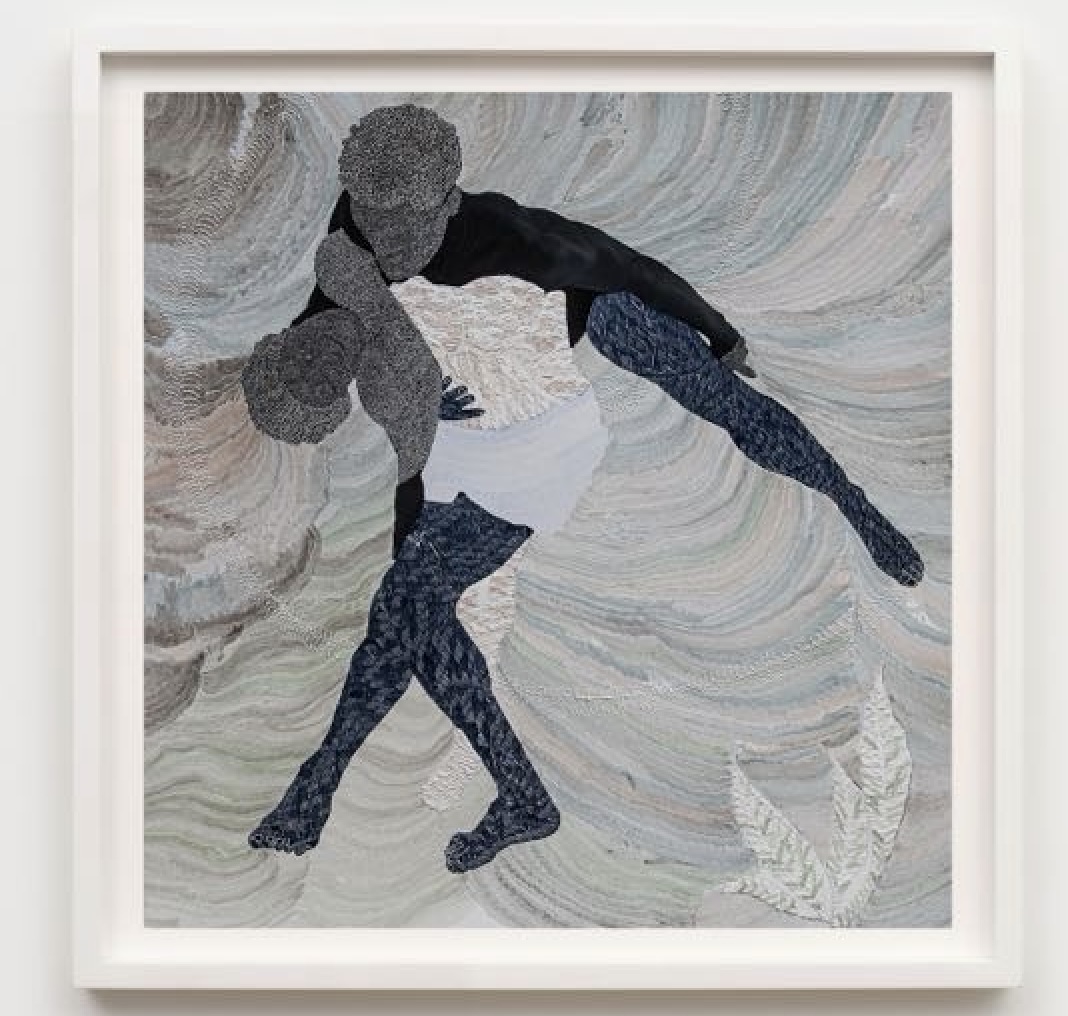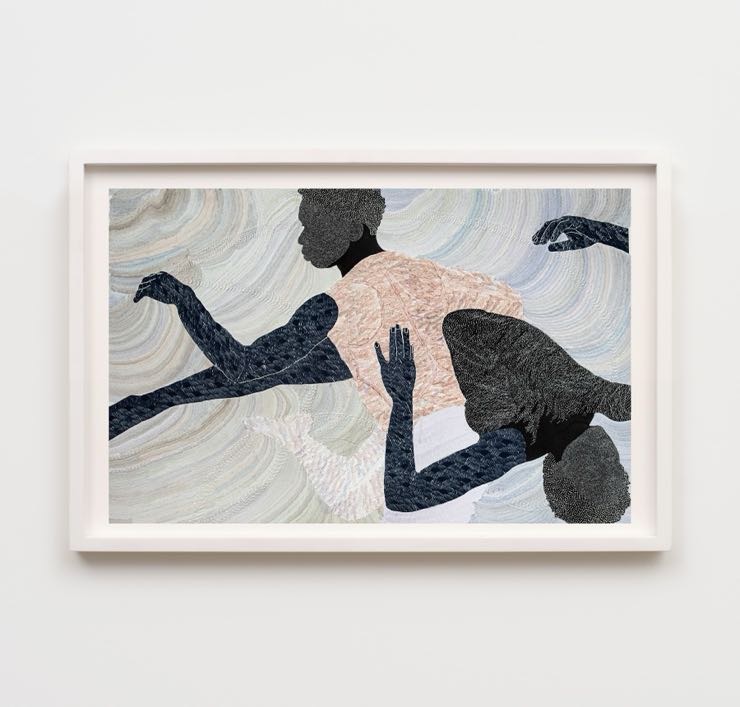
Vielmetter Los Angeles welcomed New York-based visual artist Nate Lewis for his debut solo exhibition with the gallery, “Tuning the Signals,” on view now through March 29 at 1700 S Santa Fe Ave., in Los Angeles.
Known for his sculptural approach to paper, Lewis’s latest body of work delves deeper into his exploration of movement, systems, and the interplay between the natural and cultural landscapes we navigate.
A former critical care nurse, Lewis brings a diagnostician’s precision to his art, crafting intricate figurative compositions that blend photography, painting, drawing, printmaking, and sculptural paper techniques. His works, with their textured, layered surfaces, evoke both cellular structures and topographical maps—offering an artistic echo of his medical background.
Lewis describes this new body of work as the result of years of experimentation and refinement. “With this body of work, I pared down the number of processes that I used,” he explains.
“In part because I developed a painting method that dives deeper into the micro gestures and cuts that have been present in the sculpted paper elements of the work.”
Related Stories:
https://lasentinel.net/black-in-every-color-launches-new-art-exhibition-for-black-history-month.html
https://lasentinel.net/metro-los-angeles-debuts-multimedia-art-exhibit-at-bhcp.html
This evolution allows for a greater fusion between his painted and sculpted elements, with a spectrum of color and rhythmic movement that expands upon the intersections of ideas central to his practice.
Lewis’s restrained yet potent use of black and white recalls the stark clarity of X-ray imaging. He likens the monochrome palette to a symphony’s distinct moods, allowing his figures—often capoeiristas or dancers—to flow across embossed textures, curvilinear patterns, and fabric rubs as if caught mid-motion.

“Each composition uniquely captures the sensation of the motion it represents,” Lewis explains, “through the patterns etched into the paper’s surface.”
The musical and rhythmic elements in his work find their most direct expression in his use of “Symphony No. 1 Afro-American Symphony” by composer William Grant Still. The score, which marks a historic milestone as the first symphony by an African American performed by a major orchestra in 1931, is embedded in Lewis’s predominantly black pieces—an homage to both musical and cultural resistance.
One of the exhibition’s highlights is “A Clandestine Exchange,” a new video work set to Ben Lamar Gay’s “Any Train We Can Catch.” In the video, miniature paper doll capoeiristas, manipulated by capoeira master Professor Peixe Boi, reenact the intricate physicality of the Afro-Brazilian martial art. The film juxtaposes these delicate, sculpted figures with Peixe’s shadow, moving in sync, further blurring the lines between representation, materiality, and movement.
Gallery owner Susanne Vielmetter expressed her admiration for Lewis’s ability to capture movement and meaning in his work.
“Once in a while an artist comes along who can translate how the human body moves in space into a transformative experience. Nate Lewis is such an artist. In our exhibition, he weaves together a mesmerizing video with works on paper that express the tension between movement and dance and resistance and defense,” said Vielmetter.
“His unique art-making language, which has developed immeasurably since my first exposure to his work in 2015, pulls you in as you undergo a journey of discovery,” Bakare shares. “Each movement and contour in his figurative images leaves you with exclamations of WOW—how did he do it?”
Bakare, who now owns “Syncopated Current V” (2024), one of the pieces featured in the show, describes his experience as a collector as a privilege: “It’s such a joy to be a witness to Nate’s creative output, and more importantly, I’m blessed to be a custodian of one of these works.”


